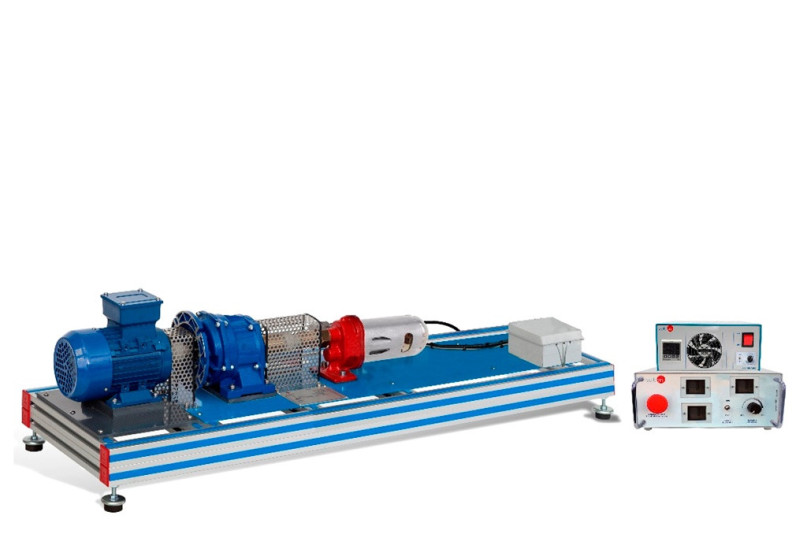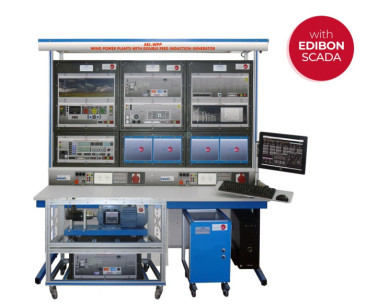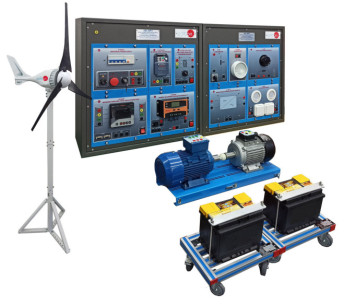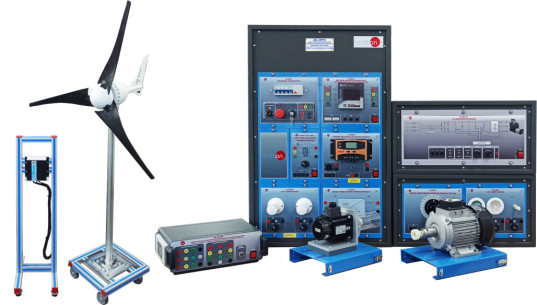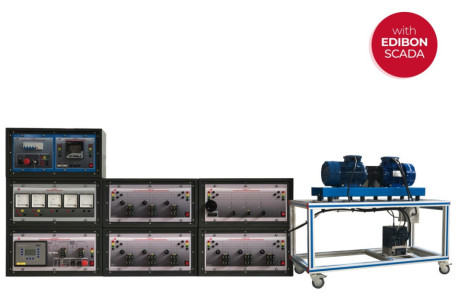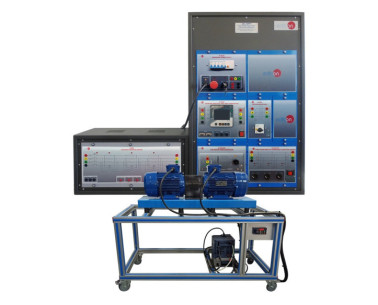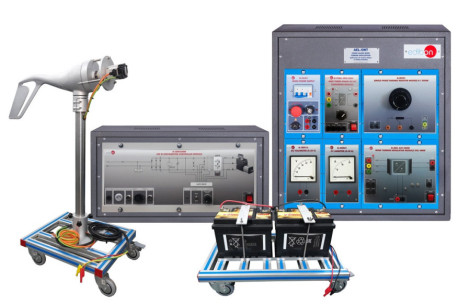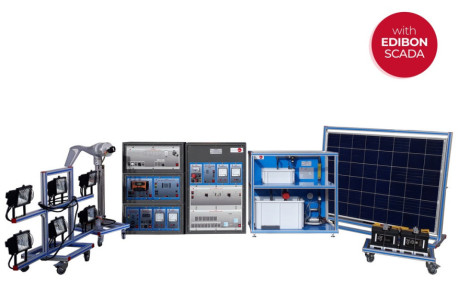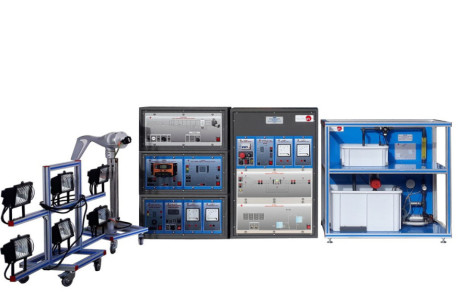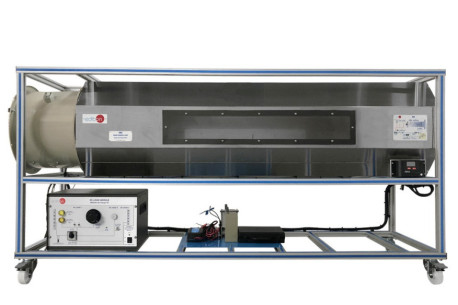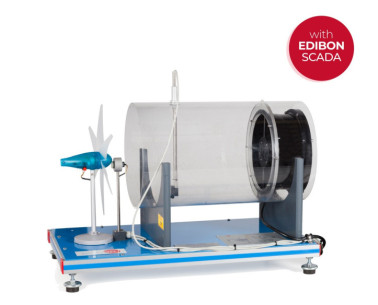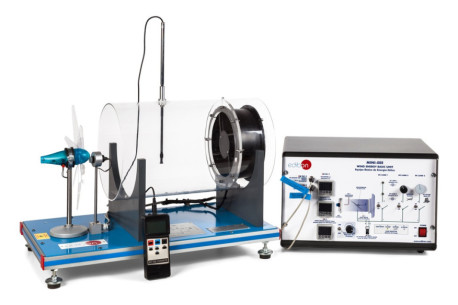The Wind Energy Drive Train Analysis Unit, "WEDTA", designed by EDIBON, allows students and professors to explore the operational characteristics of a wind turbine rotor under various wind conditions, thus optimizing the design and operation of the turbines. It also enables a detailed study of how rotational energy is converted into electrical energy. This unit facilitates the study of the fundamental process of converting the kinetic energy of the wind into electrical energy, essential for the functioning of wind turbines. Additionally, it enables the evaluation of the overall performance of a wind turbine's drive train, providing key insights to improve system efficiency and sustainability.
Complementing this advanced unit, our test unit is meticulously designed for measurements in a wind energy drivetrain. It provides a hands-on experience, allowing students to conduct precise measurements in a drivetrain, simulating real-world conditions found in wind turbine operations. Alongside, we offer a comprehensive online course on wind energy fundamentals, ensuring that students have access to both theoretical and practical knowledge.
Our system includes a drivetrain with a spur gear and a DC generator, allowing students to understand the mechanics of power transmission and electricity generation. The motor with adjustable revolutions simulates a wind turbine rotor, providing insights into the relationship between wind speed and energy generation. By simulating typical torque characteristics, the system helps in understanding how torque impacts the efficiency and performance of the generator.
The DC generator features connections for the loads, enable practical experiments on energy distribution and generation. With an adjustable load displaying current or voltage, students can explore the effects of different loads on the unit. Sensors for measuring the generator's revolutions and torque on both the drive and generator sides provide real-time data for detailed analysis.
An integrated measurement amplifier with digital displays ensures precise and easy-to-read measurements, while analog outputs allow for the transmission of torque and revolution data to external recording systems. This setup provides a thorough understanding of the drivetrain's performance, helping students and professors to optimize design and operational strategies.
Through these combined efforts, students gain a holistic understanding of wind energy systems, from theoretical foundations to practical applications, ensuring they are well-prepared to contribute to the development of efficient and sustainable wind energy technologies.
 クッキーの設定
クッキーの設定

